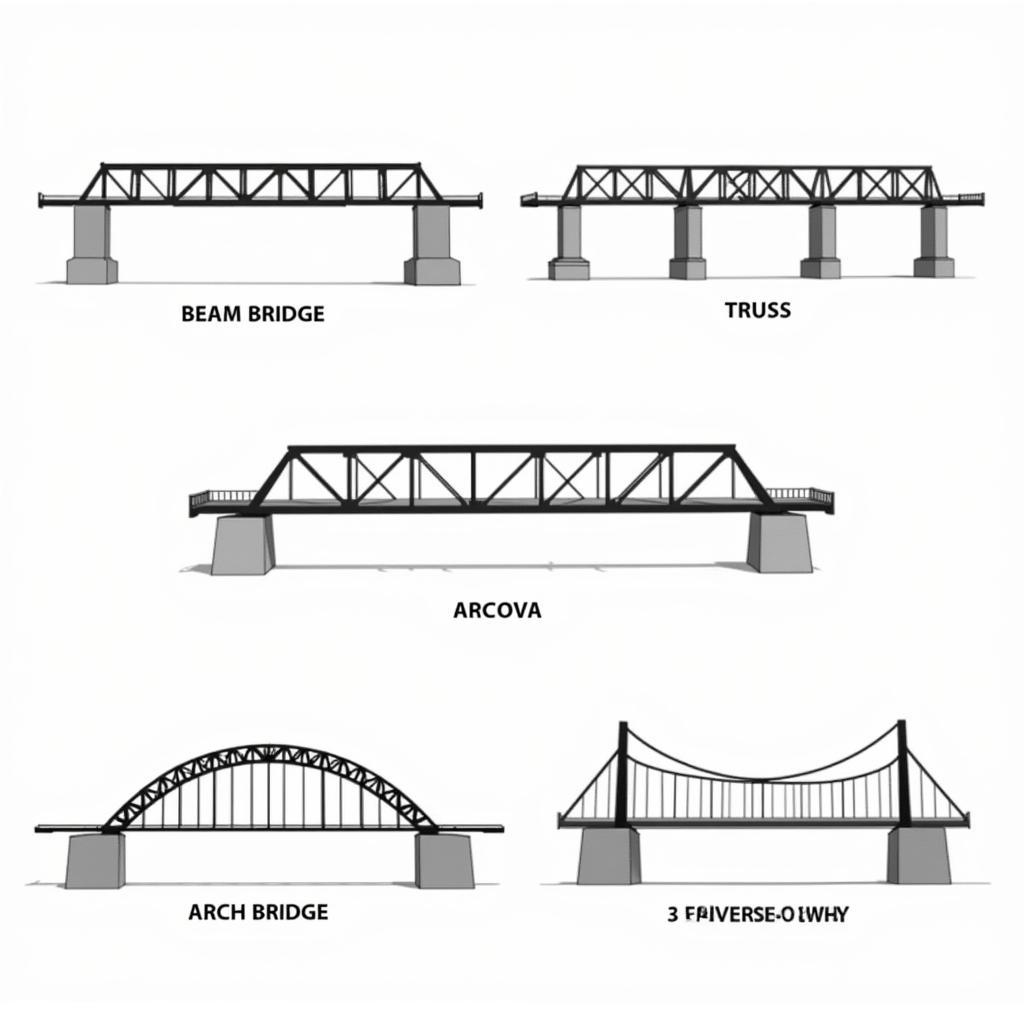Navigating the Rails: A Comprehensive Guide to Railcar Bridges
October 27, 2024Railcar Bridges, the unsung heroes of freight transport, play a vital role in connecting industries and facilitating the movement of goods across waterways. These impressive structures, often marvels of engineering, provide a dedicated pathway for railcars to traverse rivers, canals, and other bodies of water, ensuring the seamless flow of commodities and raw materials.
The Anatomy of a Railcar Bridge
Railcar bridges, unlike their counterparts designed for passenger trains, prioritize load-bearing capacity and functionality over aesthetic appeal. They are typically constructed using robust materials like steel and concrete, chosen for their strength and durability to withstand the immense weight of fully loaded railcars. The design of a railcar bridge is influenced by several factors, including the width and depth of the waterway, the expected volume of rail traffic, and the types of cargo being transported.
Types of Railcar Bridges
Depending on the specific geographical and logistical challenges, various types of railcar bridges are employed, each with its unique design and advantages:
- Beam bridges: These are the simplest and most common type, consisting of horizontal beams supported by piers or abutments.
- Truss bridges: Utilizing a framework of triangles for strength, truss bridges are suitable for longer spans.
- Arch bridges: These aesthetically pleasing bridges transfer the load of the deck to the abutments through a curved structure.
- Suspension bridges: Employing cables suspended from towers, these bridges are ideal for very long spans but less common for railcar use due to their flexibility.
 Various railcar bridge designs
Various railcar bridge designs
The Crucial Role of Railcar Bridges in Global Trade
Railcar bridges are essential components of global supply chains, enabling the efficient transport of goods over water obstacles. They are particularly crucial for industries reliant on bulk cargo, such as:
- Mining: Transporting raw materials like coal, iron ore, and minerals.
- Agriculture: Moving grain, soybeans, and other agricultural products.
- Manufacturing: Delivering raw materials to factories and finished goods to distribution centers.
By eliminating the need for railcars to be unloaded and reloaded onto barges or trucks, these bridges significantly reduce transport time and costs, contributing to the overall efficiency and affordability of goods.
Maintenance and Challenges
Maintaining the structural integrity of railcar bridges is paramount. Regular inspections, cleaning, and repairs are essential to address wear and tear caused by constant heavy loads, weather conditions, and potential corrosion. As these bridges age, renovations and upgrades are often necessary to accommodate heavier loads and modern railcar designs.
One of the primary challenges faced in railcar bridge maintenance is minimizing disruptions to rail traffic. Closures for repairs can have significant economic repercussions, highlighting the need for efficient maintenance strategies and innovative engineering solutions.
The Future of Railcar Bridges
As global trade continues to expand, the demand for efficient and reliable freight transport systems is set to increase. Railcar bridges will undoubtedly play a pivotal role in meeting this demand, prompting ongoing research and development into new materials, construction techniques, and sustainable design practices.
The future of railcar bridges likely involves:
- Advanced materials: Utilizing lighter and stronger materials to increase load capacity and reduce maintenance needs.
- Smart sensors: Integrating sensors to monitor structural health, enabling predictive maintenance and minimizing downtime.
- Sustainable design: Incorporating eco-friendly materials and construction methods to minimize environmental impact.
Conclusion
Railcar bridges, often overlooked yet indispensable, are the backbone of global freight transport networks. These impressive feats of engineering ensure the seamless flow of goods across waterways, supporting industries and economies worldwide. As technology advances and the demand for efficient freight transport continues to grow, railcar bridges are poised to evolve, incorporating innovative solutions to meet the challenges of the future.